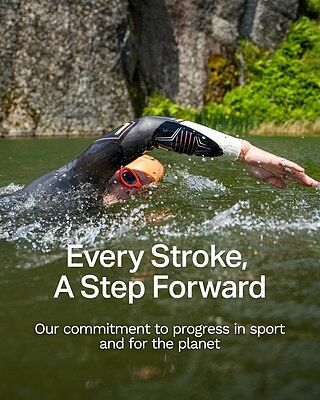Top tips for staying safe in the water
Whilst we all enjoy getting out and swimming in the open water, whether it be for leisure, training or racing, the water can also pose a danger to all swimmers, of all abilities.
As open water specialists, ZONE3 are aware of such dangers and committed to raising awareness around open water safety and advocating water safety protocols. This is so swimmers are prepared for situations where they, or someone else, are in danger of drowning, which may help to save their own or another person’s life.
ZONE3 supports the RNLI’s ‘Respect the Water’ Campaign, and we want to highlight some of the fantastic work they’ve done to educate swimmers and onlookers on open water safety. Take a look below to find out more about the protocols in place to deal with such situations.
How to prevent yourself from drowning
Float to Survive – If you find yourself in a situation where you are at risk of drowning it’s important to remember to the phrase ‘Float to Live’. This will help to conserve your energy and more importantly, reduce any of the panic you’re likely to be feeling. Firstly, you must fight your instinct to thrash around. The RNLI advise you to lean back and extend both your arms and legs – if you need help to float, gently move them around to stay above the water. Secondly, float until your breathing is under control, this will help you restore any energy you’ve lost. The final step is to then call for help, swim to safety, or to continue floating until assistance arrives.
Cold Water – Another factor which you may have to contend with when struggling in open water is cold water shock. This is triggered in water temperatures lower than 15 degrees and these sorts of temperatures are common in the waters surrounding UK and Europe. Cold water shock can steal air from your lungs and have a devastating effect in seconds. To minimise the risk of cold-water shock, the RNLI recommend:
-
Take a minute. The initial effects of cold-water pass in less than a minute so don’t try to swim straight away.
-
Relax and float to catch your breath back.
-
Keep calm and call for safety if you’re able to.
Riptides and Currents – A danger to swimmers of all abilities, rip currents can travel at the same speed of an Olympic swimmer (4.5mph). Once again, your best way to deal with these is to float on your back and catch your breath back as much as possible.

How to prevent others from drowning
Know who to call - Your first port of call when you witness someone struggling in the open water is to call the emergency services, before attempting anything else, so you know help is on its way. Alternatively, ask someone else nearby to call for help if you are alone without a phone.
Part of the RNLI’s drowning prevention focuses on who the correct emergency service is to call in different locations:
-
For inland locations you should call 999 and ask for Fire and Rescue Service.
-
For Coastal locations you should call 999 and ask for the Coastgaurd.
Stay calm and resist temptation – Trying to keep your own emotions under control in a situation like this will be a challenge too. It’s important to resist any temptation to go in – the water may be cold and the current may be strong, which will limit your own ability to swim, no matter how accomplished a swimmer you are.
Find a rescue aid – If you find a life ring, throw back, or any other public rescue aid equipment nearby, quickly read through the instructions and throw it to the person in need. Alternatively, if you can’t find a specific public rescue aid, throw anything that will float.
Open Water Swim Preparation:
ZONE3 recommend you are fully prepared before embarking on any open water swimming and remember to swim in sight of onlookers and within a safe distance of any land so that you can swim to if you find yourself struggling.
One way you can stay safe is to be as visible as possible. The ZONE3 wetsuits, swim caps, and swim safety buoys are designed to make you as visible as possible to onlookers whilst you’re in the water.

Ultimately, there are two simple skills you should know that could save a life:
-
If you find yourself in difficulty in the water, float to increase your chances of survival.
-
If you see someone else in trouble in the water, call 999 or 112 and ask for the Coastguard.
For more information on water safety and to check out more of the amazing work that the RNLI do, check out their website here.



















































